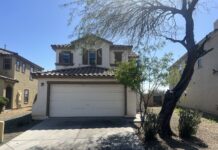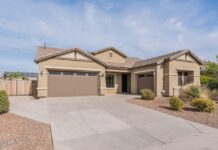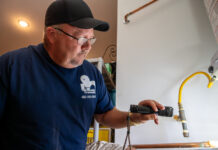“Real estate buying bank owned” refers to investing in discounted foreclosure homes or commercial properties. With over two million residential foreclosure homes on the market, banks are liquidating ‘toxic’ assets from their books and selling properties below market value.
Real estate buying bank owned can save buyers money and time. In the past, individuals would attend foreclosure auctions to purchase real estate repossessed by mortgage lenders. Today, many buyers are electing to buy bank owned foreclosures because properties are sold with a clean title; eliminating the sometimes costly task of creditor lien removal.
Although bank owned properties often require repairs, these costs are factored into the listing price. Buyers can often save between 20 and 30 percent of the property value, allowing them to obtain instant home equity. Since bank foreclosures are priced below market value, buyers often find qualifying for bank financing easier.
Several government-sponsored programs are available to help buyers save even more money when buying bank foreclosures. One of the most popular is the Neighborhood Stabilization Program (NSP) offered through HUD.
NSP grants fall under the Community Reinvestment Act (CRA) enacted by Congress in 1977. Buyers can apply for NSP funds when buying real estate in areas with high foreclosure rates. Funds must be used to purchase, rehab and sell foreclosure properties.
Buyers who qualify for NSP grants can apply for mortgage loans that include funds for required repairs. This can be very beneficial when homes require major renovations.
Traditional mortgage loans require borrowers to take out construction loans which are usually assessed with a high rate of interest. Once repairs are made, borrowers must refinance mortgages. Being able to roll construction costs into the home loan can potentially save buyers several thousand dollars.
Applying for NSP grant money requires more time than applying for a conventional home loan. However, the savings are well worth the effort. Individuals can apply for NSP grants at www.HudNSPHelp.info.
Another good option for buying foreclosure homes is Fannie Mae’s Home Path Mortgage program. HomePath properties can be a good choice for individual buyers or real estate investors. HomePath gives home buyers the option of submitting offers on newly listed property first. Investors must wait until bank foreclosures have been listed through HomePath for at least 15 days.
One of the most attractive benefits of Fannie Mae’s Home Path Mortgage program is the low down payment requirement of 3 percent. Buyers are allowed to obtain down payment assistance from family, friends, employers or charitable organizations. This is prohibited when applying for bank financed mortgages other than VA and FHA loans.
Buyers of Fannie Mae HomePath properties must obtain preapproved financing prior to submitting their purchase offer. A list of properties for sale and Fannie Mae approved lenders can be found at www.HomePath.com.
Using government grants and special finance options can help buyers maximize housing dollars. Buyers with bad credit may need to engage in credit repair strategies in order to qualify for a home loan. Most banks require borrowers to have a FICO score of 720 or higher to obtain loan approval.
Individuals with credit problems can obtain no-cost housing counseling through the Department of Housing and Urban Development website at www.HUD.gov. Having a good credit rating will allow buyers to obtain a lower rate of interest and ensure they can take advantage of low-cost, bank owned real estate.
File photo











![City gave new manager big low-interest home loan City Manager Ben Bitter speaks during a Chamber of Commerce event at Global Water Resources on April 11, 2024. Bitter discussed the current state of economic development in Maricopa, as well as hinting at lowering property tax rates again. [Monica D. Spencer]](https://www.inmaricopa.com/wp-content/uploads/2024/04/spencer-041124-ben-bitter-chamber-property-taxes-web-218x150.jpg)





